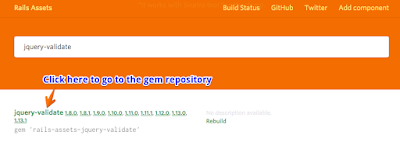Recently, for one of our client projects we decided to make use of Bower via Rails Assets to better manage Javascript dependencies with respect to the application. This project is on Rails 4.0.13 . For reasons as to why we choose this approach one can refer to the below two blogs –
1. Better Asset Management in Rails Using Rails Assets
In our application, we were basically replacing the existing dependencies(few of which were placed in vendor/assets/javascripts and others were gems like the jquery-ui-rails) with gems provided to us via the Rails Assets site.
One such third party plugin that we had to replace was the jquery validate plugin. After including the appropriate gem(rails-assets-jquery-validate) from rails-assets site in the gemfile and running bundle to install that gem you might observe from the Gemfile.lock that this gem depends on the rails-assets-jquery-gem.
The BIG question now is, how does the rails-assets-jquery-validate gem(I had installed the gem with version 1.13.1) know which version of the rails-assets-jquery gem it should pick up, given that unlike rubygems.org the current rails-assets site(based on the screenshot below) doesn’t currently list the runtime dependencies required for a gem(which in our case is that we can’t directly find the runtime dependencies for rails-assets-jquery-validate gem).
The workaround
One can find out the exact dependencies required wrt a specific gem by checking out the bower.json file with respect to appropriate code repository corresponding to the gem(in the context of our e.g., this would be for checking out the bower.json file of the rails-assets-jquery-validate gem related code repository) listed on the rails assets site.

